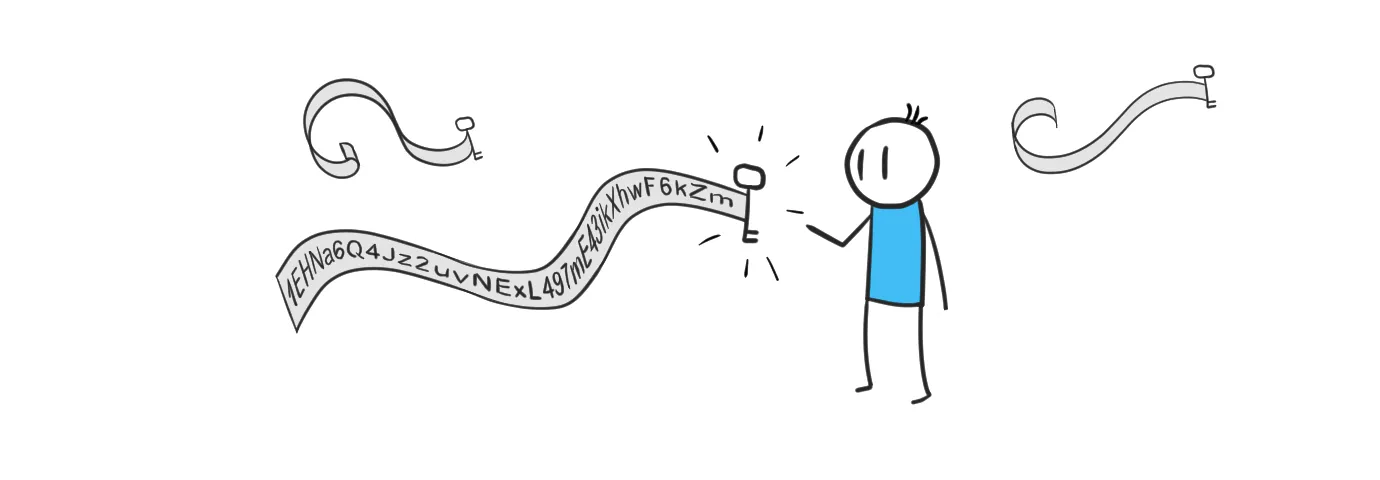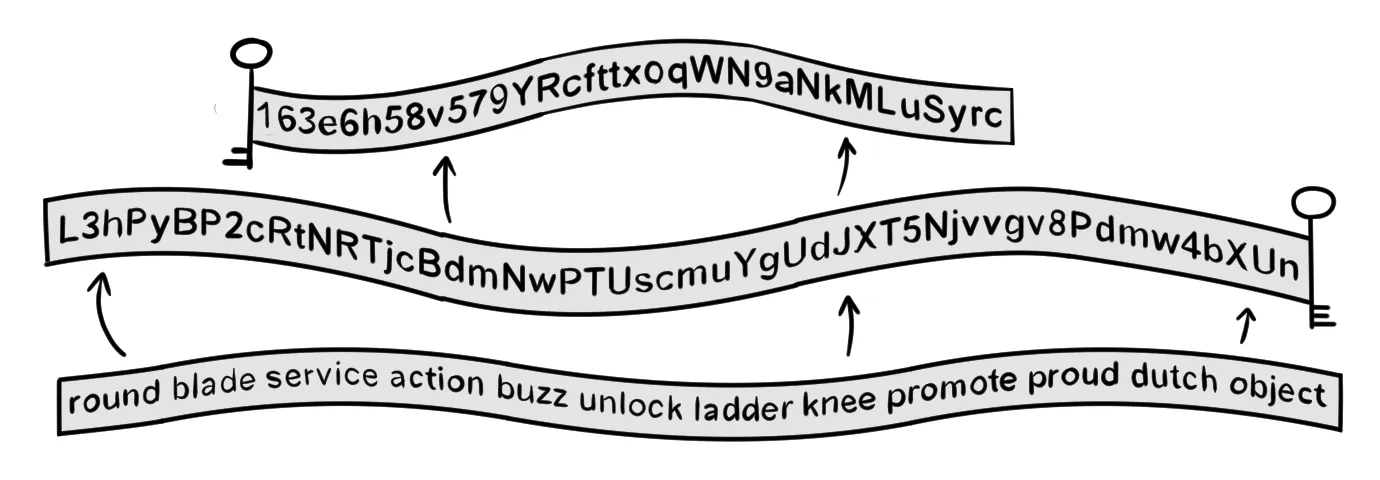Assets

Exchange

Buy Crypto




Entering the world of crypto might seem complicated and twisted at first, but as soon as you understand the basics, there is nothing to be afraid of. In this article, we will present you with the most important things you need to know about protecting your wallet through the safe storage of the most private information every crypto enthusiast has: the seed phrase and private keys.
A private key is a secret number that allows crypto to be spent.
Because the private key is the “ticket” that allows someone to spend coins, it is important that these are kept secure.
You’ll get to have your own private keys as soon as you create a cryptocurrency wallet. In addition to the wallet address (which is supposed to be disclosed to the public, but we’ll talk about that later), you’ll also get a combination of letters and numbers which is the private key itself. It plays the same role for your crypto wallet as the PIN does for your bank account, when you want to withdraw money from an ATM.

However, private keys are much longer and complex than any PIN to a debit/credit card for ensuring security. In a bank, you’ll actually need the card itself to proceed to the cashout, while an electronic wallet can be accessed from any digital device. For this reason, private keys are supposed to be as complex as possible to provide your funds with the highest level of security.
Here is an example of BTC private keys : 1EHNa6Q4Jz2uvNExL497mE43ikXhwF6kZm.
Anyone who knows this combination will be able to access your wallet and make transactions. Don’t use the above example as private keys to your wallet, since it has already been shared with public.
Thus, private keys serve as a signature for the wallet, and to receive and send coins, you’ll also be provided with public address containing the history of transactions and accessible for anyone. As long as you keep your private keys in secret, nobody will be able to take control over your funds.
When creating a new wallet in Atomic, you will be given a 12 words mnemonic seed.
For example: “round blade service action buzz unlock ladder knee promote proud dutch object”.
it contains exactly twelve characters, and the word order is crucial in this case. Every word is tied to a number, so the phrase can be turned into a sequence of numbers which in turn generate private keys for the wallet.

In Atomic wallet, mnemonic seed is generated automatically: all 12 words of the seed are taken out from a 2048-word database which provides you with 2048^12=5e39 possible seed phrases and is unimaginable to hack.
Mnemonic seed (or seed phrase) is necessary to access your wallet and the data stored from a new device or in case the first gadget you used has been lost, or if you forgot your password to the previous wallet. Basically, you type your mnemonic seed on a new device and are able to recover the old wallet. One seed is able to recover all your addresses which is very convenient. However, it is both a useful backup to your storage and potential risk of giving full access to your assets if anybody gets ahold of your seed. For this very reason, it is important to be extra careful of where and how you store the recovery seed because it is the only back-up for your non-custodial wallet!
To understand the connection between mnemonic seed and private keys, let’s refer to a metaphor of a tree. In this case, the seed is similar to the tree roots: it shouldn’t be visible to anyone, and it serves as the basis for all further information about your wallet. The seed phrase is able to generate private keys for every address you have, so you’ll be able to back up all your accounts with one seed.

Store private keys and seed offline to avoid the risk of hacking, information leakage or equipment fault. Stay aware of any devices around you that might be recording your actions, like a microphone or a camera.
Write down the seed phrase with all the words in the right order and spelled properly. It goes without saying that you shouldn’t rely on your memory as there is only one chance to write it down.
Use a paper wallet, it is a piece of paper on which you print information on your accounts such as its public and private keys. Some people prefer to laminate their paper wallet to make it waterproof. However, remember to store your paper wallet in a safe place where other people wouldn’t find it, for example, in a vault.
Use hardware wallets (similar to a flash drive) designed specifically to keep private keys secure. Such wallets generate for you public and private keys.
If you don’t have any hard wallet at the moment of registration of your account, it is also possible to store private keys in a flash drive itself, but this option is safe as long as the drive stays in your hands. Cases are known in which a flash drive was eaten by a dog or hidden somewhere by a child. Also, you can use a specific flash drive encrypting the data to enhance the level of security.

After saving the seed offline, you need to think of how to protect it. There might be many potential threats to a piece of paper, like water, fire or even sunlight, let alone the odds of throwing it away by mistake. For this reason, many users prefer to laminate their recovery seed to minimize the environmental influence. However, you have to make the lamination yourself which implies purchasing specific tools, but normally, they are quite cheap, and the process doesn’t take up a lot of time. As to where to keep it, you might like the idea of a vault or a safety deposit box in a bank.
When the phrase is physically protected from potential threats, there are still some rules as to how to avoid information leakage. In today’s digitalization and Internet of Everything, you should always stay aware of the risk of being recorded at the moment when you type or write down the phrase, so make sure there are no cameras or keyloggers: don’t expose your seed or key in any public place and enhance the device security by using only reliable browsers, updating the software and changing passwords every now and then.

Store, share photos or screenshot of your keys. Protect yourself against potential hacking in future!
The security of your private keys and mnemonic seed is crucial for the safety of your funds. While private keys are a signature to your wallet allowing to spend the coins, mnemonic seed helps to recover the old wallet or access it from a new device. To enhance their security, it is recommended to keep the keys and the seed offline, in a hardware or paper wallet, protect the storage device from any environmental influence, and not to take pictures or screenshots of the code to avoid possible hacking. Now that you know how to store your wallet’s keys and seed, isn’t it time to buy some crypto now?

Learn how Polygon Bridge works and move Polygon crypto like USDC Polygon between Ethereum and Polygon step by step.